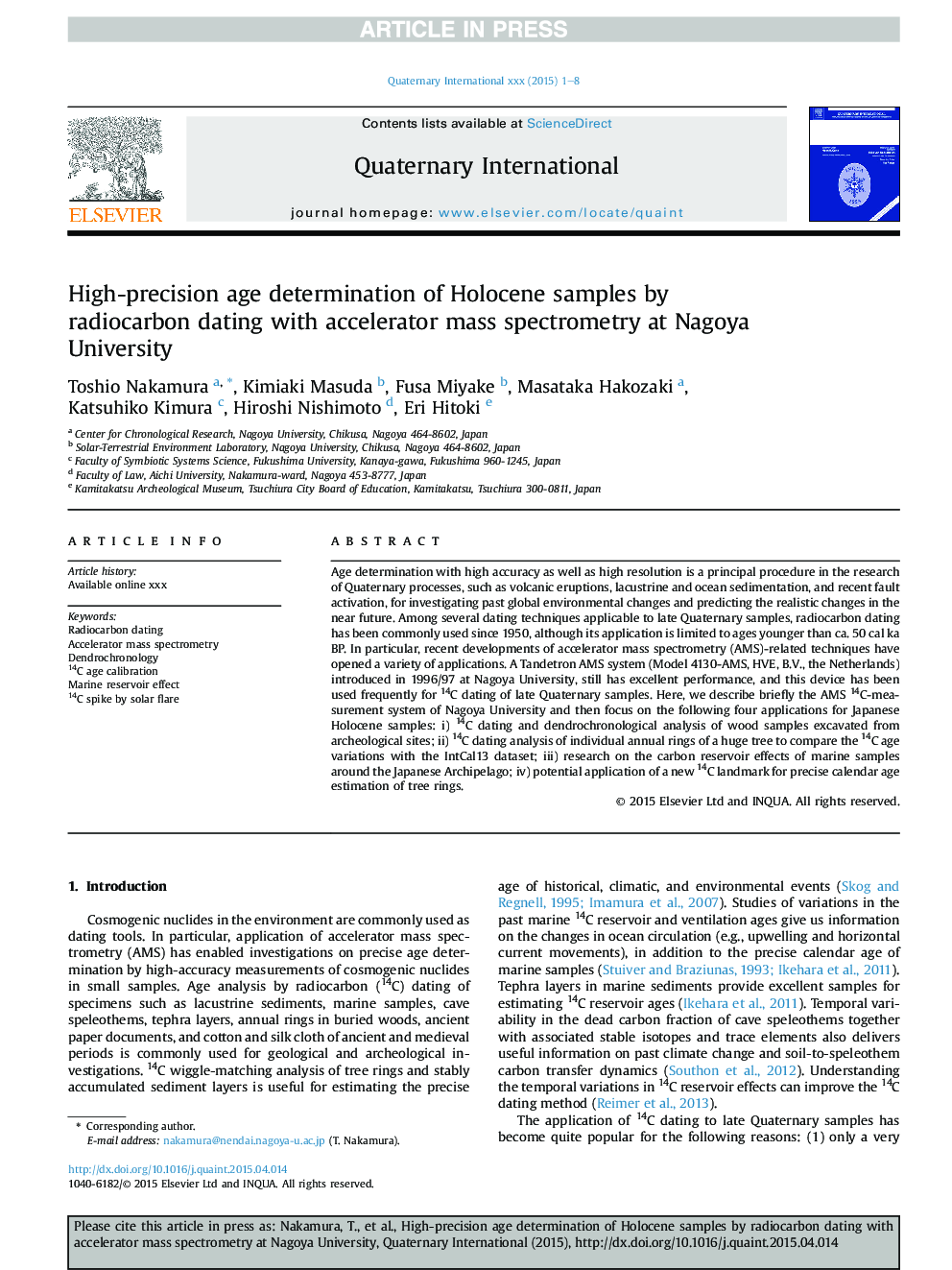| Article ID | Journal | Published Year | Pages | File Type |
|---|---|---|---|---|
| 7451365 | Quaternary International | 2016 | 8 Pages |
Abstract
Age determination with high accuracy as well as high resolution is a principal procedure in the research of Quaternary processes, such as volcanic eruptions, lacustrine and ocean sedimentation, and recent fault activation, for investigating past global environmental changes and predicting the realistic changes in the near future. Among several dating techniques applicable to late Quaternary samples, radiocarbon dating has been commonly used since 1950, although its application is limited to ages younger than ca. 50 cal ka BP. In particular, recent developments of accelerator mass spectrometry (AMS)-related techniques have opened a variety of applications. A Tandetron AMS system (Model 4130-AMS, HVE, B.V., the Netherlands) introduced in 1996/97 at Nagoya University, still has excellent performance, and this device has been used frequently for 14C dating of late Quaternary samples. Here, we describe briefly the AMS 14C-measurement system of Nagoya University and then focus on the following four applications for Japanese Holocene samples: i) 14C dating and dendrochronological analysis of wood samples excavated from archeological sites; ii) 14C dating analysis of individual annual rings of a huge tree to compare the 14C age variations with the IntCal13 dataset; iii) research on the carbon reservoir effects of marine samples around the Japanese Archipelago; iv) potential application of a new 14C landmark for precise calendar age estimation of tree rings.
Related Topics
Physical Sciences and Engineering
Earth and Planetary Sciences
Geology
Authors
Toshio Nakamura, Kimiaki Masuda, Fusa Miyake, Masataka Hakozaki, Katsuhiko Kimura, Hiroshi Nishimoto, Eri Hitoki,
